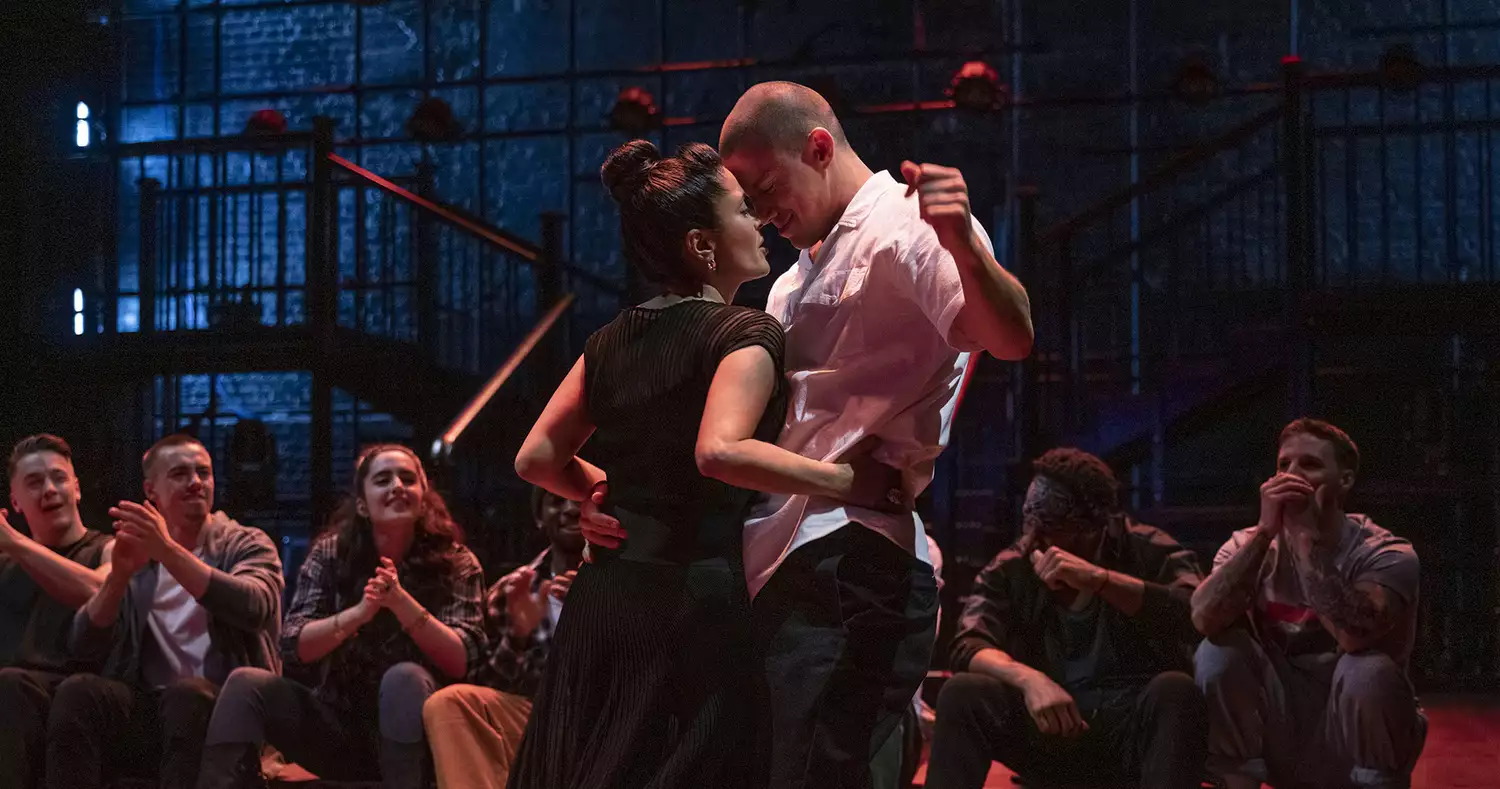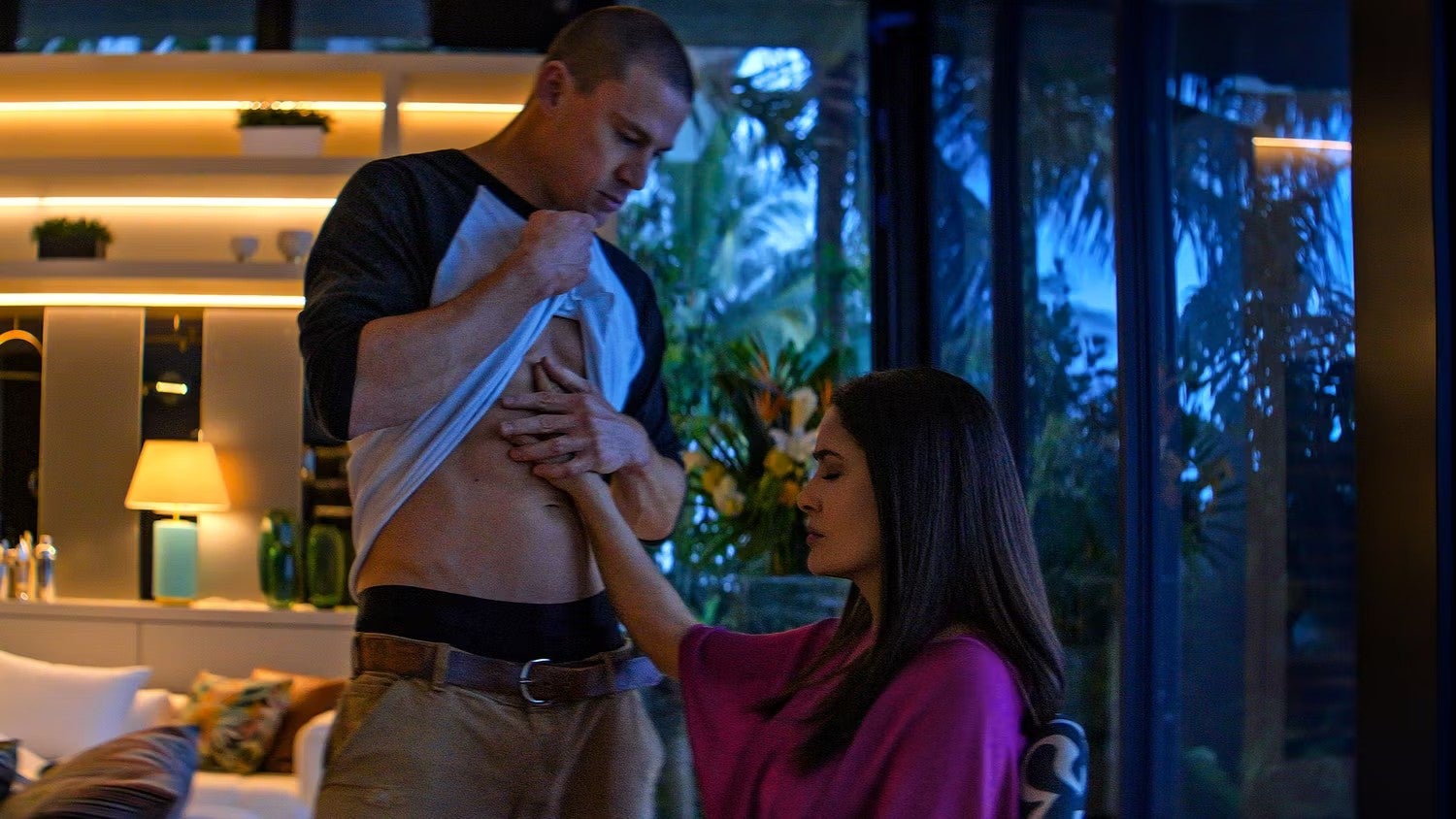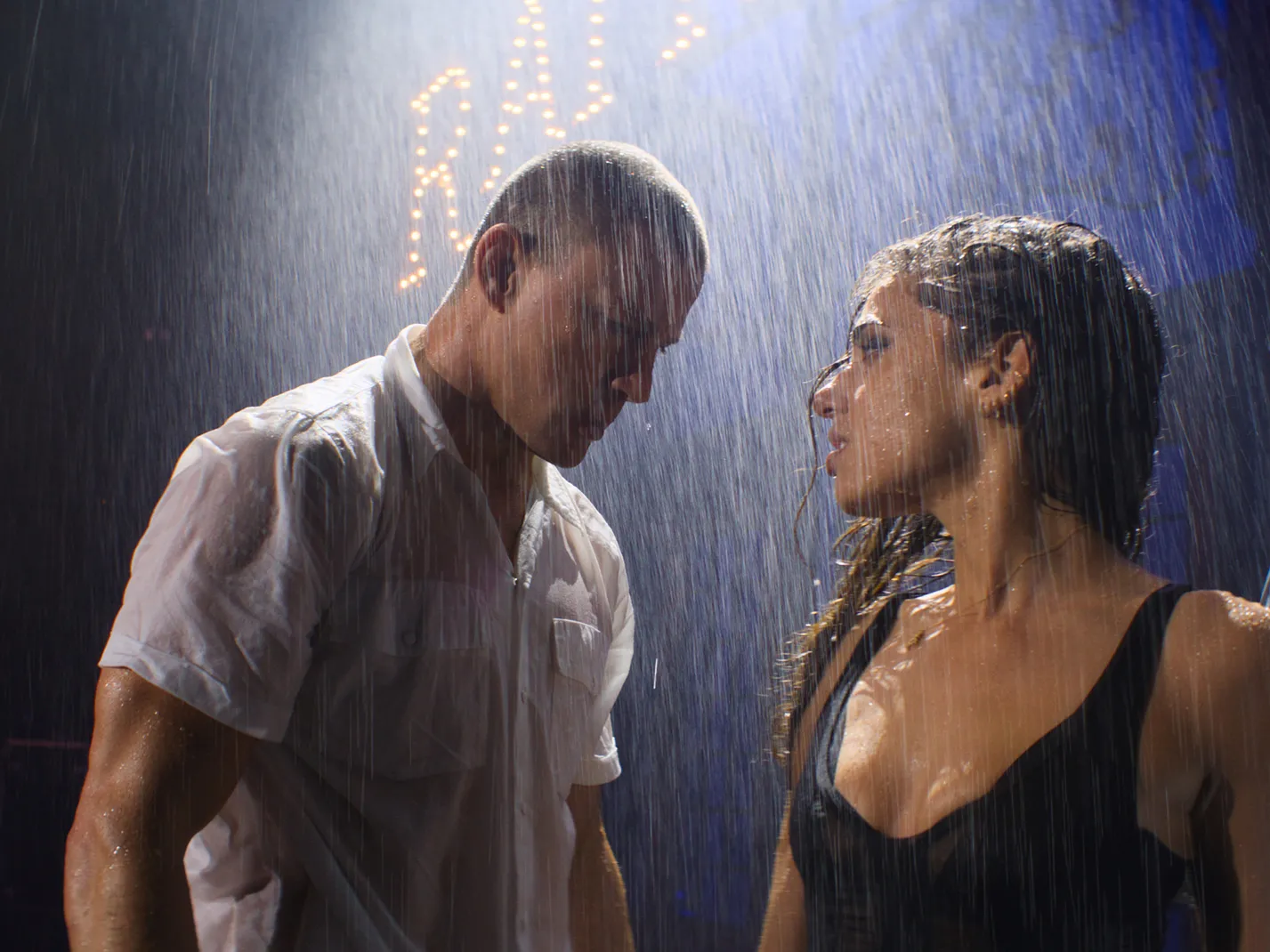In the dimly lit confines of a theater, where shadows dance with the flicker of neon lights and anticipation hangs heavy in the air, the stage is set for one last performance—a swan song that encapsulates the essence of a bygone era. Such is the premise of “Magic Mike’s Last Dance,” a film that beckons audiences into a world where inhibitions are shed like second skins and the pursuit of passion knows no bounds. Let’s explore with us!

At the helm of this cinematic odyssey stands none other than Channing Tatum’s iconic character, “Magic” Mike Lane, whose journey from humble stripper to reluctant entrepreneur has captivated audiences since his inception in 2012. Directed by the visionary Steven Soderbergh, whose deft touch has graced the silver screen with such masterpieces as “Ocean’s Eleven” and “Traffic,” “Magic Mike’s Last Dance” marks a poignant return to familiar territory—a bittersweet farewell to a character beloved by many.
Gone are the days of raucous revelry and hedonistic excess; in their place, we find Mike navigating the tumultuous waters of middle age with a stoic grace befitting a seasoned veteran. No longer does he ply his trade on the stage, eliciting gasps of admiration and desire from adoring crowds. Instead, he finds solace in the quiet dignity of craftsmanship, channeling his creative energies into the art of furniture making—a profession as unassuming as it is noble.
Yet, destiny has a peculiar way of knocking on one’s door when least expected, and for Mike, it comes in the form of Maxandra Mendoza, portrayed with mesmerizing allure by the incomparable Salma Hayek. A woman of enigmatic charm and boundless ambition, Maxandra is a beacon of light in the dimly lit landscape of Mike’s existence—a siren whose call beckons him to embark on one final adventure.

Their encounter, fleeting yet profound, sets the stage for a narrative that transcends the boundaries of time and space—a tale of sensuality, self-discovery, and the timeless allure of the stage. As Mike is drawn into Maxandra’s world of opulence and intrigue, he grapples with questions of identity and purpose, confronting demons long thought buried beneath the facade of bravado and charisma.
In the hands of Soderbergh, “Magic Mike’s Last Dance” unfolds with the hypnotic rhythm of a nocturnal reverie, each scene imbued with a sense of urgency and longing. From the sun-drenched shores of Miami to the storied cobblestone streets of London’s West End, the film traverses landscapes both literal and metaphorical, inviting audiences on a journey of introspection and revelation.
Central to the film’s narrative is the complex dynamic between Mike and Maxandra—a pas de deux that blurs the lines between mentorship and desire, collaboration and coercion. As they navigate the treacherous waters of ambition and betrayal, their relationship becomes a microcosm of the human condition—a delicate balance of power and vulnerability, trust and deception.

Yet, for all its thematic richness and visual splendor, “Magic Mike’s Last Dance” is not without its enigmatic flaws. The supporting cast, while imbued with charisma and charm, often feels underutilized, relegated to the periphery of Mike and Maxandra’s tumultuous dance. Similarly, questions linger regarding the deeper motivations of our protagonists, their desires obscured by the glittering facade of fame and fortune.
Nevertheless, as the final curtain falls and the lights dim on the stage, “Magic Mike’s Last Dance” leaves an indelible impression—a testament to the enduring power of cinematic storytelling and the eternal quest for self-discovery. In the world of “Magic Mike,” where dreams intertwine with reality and passions burn bright in the darkness, perhaps the true magic lies not in the destination but in the tantalizing journey itself.
See more: Exploring the Eccentric World of Yorgos Lanthimos: A Ranking of Every Film
